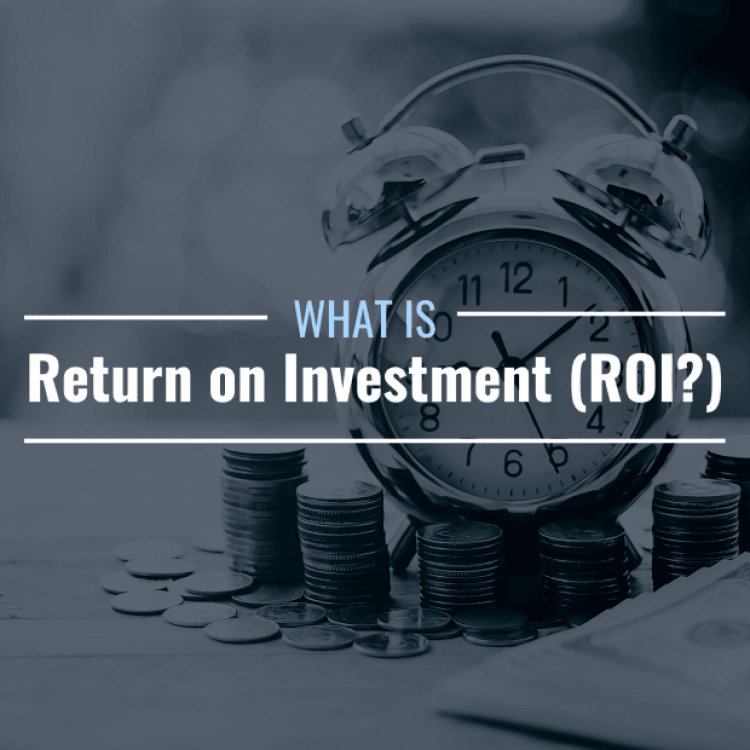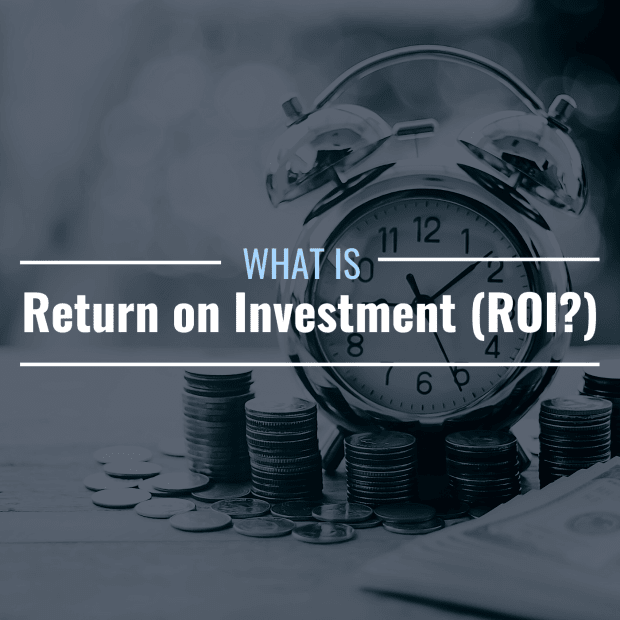What Is Return on Investment (ROI) and How Is It Calculated?
Whether investing in stocks or something else, you want to make sure that you're making a good decision with your money, especially if you've put a lot into this. Thankfully, there is a simple way to determine how much you're profiting from an investment, and how much you could potentially profit ...


Whether investing in stocks or something else, you want to make sure that you're making a good decision with your money, especially if you've put a lot into this.
Thankfully, there is a simple way to determine how much you're profiting from an investment, and how much you could potentially profit down the line. It's known as a return on investment, or ROI. ROI is one of the most commonly used metrics in investing and business, so if you're not yet familiar with what it is and how to calculate it, you should get acquainted—for your investment's sake.
What is a return on investment, and why is it so important for investors and businesses alike?
What Is Return on Investment?
Return on investment is exactly how it sounds: the metric used to determine the return you are getting on your investment. ROI essentially measures how efficient or profitable the investment has been and, possibly, could be down the line.
As you likely assumed, the higher the ROI, the better a return you're getting. A stock that has doubled in price since you bought it would have a 100% ROI, which is a much better scenario than a stock whose return on investment so far is just 10%. However, ROI is just one of many things you should factor in your investment. Calculating ROI on a current investment is simply a view of how profitable the investment has been so far, and calculating what ROI could be on an investment in the future is a mere estimation. You'll need to do plenty of research beyond ROI to determine if your investment could potentially become more profitable, or whether now is the time to sell.
ROI is a useful tool for investors and businesspersons—just one that can require context from time to time. Having a ROI of 50% on an investment can look good by itself, but there's the context you need to determine how well the investment has done. It's 50% now, but if it was 70% a year ago, this may not be the solid investment you think it has been. And if it reached 50% at a slower rate than it took a different investment of yours to hit 30%, it may not be the most efficient investment in your portfolio, even if it has the highest ROI.
Return on Investment Formula and Example
To determine your ROI by yourself, you'll need a couple of figures beforehand: The initial cost of the investment and the current value of the investment. With these, you can determine the net profit of the investment.
Because of this, you can look at the ROI formula in two ways. One way is:
ROI = (Net Profit/Cost of Investment) x 100
Or, if we wanted to break it down even further:
ROI = ((Current Investment Value - Cost of Investment)/Cost of Investment) x 100
Let's use an example. Say five years ago, you spent $2,000 buying a company's shares. Today, those shares are worth $3,100. The current investment value minus the cost of investment, aka $3,100–$2,000, comes out to $1,100 of net profit.
$1,100/$2,000 = 0.55. 0.55 x 100 = a return of investment of 55% for these shares.
Of course, not every ROI calculation will be as simple as that one. In business, for example, it would be easy to find the ROI profitability ratio based just on having the company's net profit and how much the company's total assets are worth. If you're looking to see the ROI of a specific business campaign, though, you'll have to dig deeper.
ROI in Marketing
Marketing is an area of a business where calculating ROI is particularly common since marketing is so often done in terms of individual campaigns.
Calculating the ROI for your marketing campaigns can give you a better handle on what the most effective method of creating profit via marketing strategy is for your company, and it can be used as evidence of success when pitching similar marketing campaigns for the future.
To use a fairly simple example, let's say you're looking to see the ROI on the marketing campaign done to sell a single product. Here, you would subtract the amount invested in marketing the product from the gross profits made from the product, and then divide that figure by the marketing investment.
So if your company invested $10,000 into marketing and you've calculated that the gross profit that campaign generated for the product is $17,000, your equation is (17,000-10,000)/10,000, or 7,000/10,000, or 0.7. Your ROI here is 70%.
That all looks simple with nice round numbers, but there's more to it than that. You'll need to determine every cost that has gone into the marketing campaign to determine the full cost—and the gross profit made as well.
Why Do People Use ROI?
Despite the many specific figures that can go into ROI calculations, investors, marketers, and businesses tend to use ROI because it's a fairly simple tool to understand. It's the ratio of net profit being made to initial cost put into an investment.
That makes it a particularly versatile tool for those in business to use. For investors, it's literally about seeing the profitability ratio for your investment. In business, it can give you a picture of how successful nearly any investment in your business has been, whether that's hiring new staff, creating a new department, or purchasing new software or factory equipment. You can analyze individual marketing campaigns and compare them to try to determine what it was you did in one campaign that made it more successful than the other.
Because it's a metric that lacks certain context, ROI also forces you to give a thorough look at your investments to see what makes them successful and possibly how to sustain that success—which is known as momentum. ROI functions as part of the analysis, albeit a very important part: It would be a lot harder to determine an investment strategy that works if you didn't have an initial ROI to show what has been working so far, and it would be harder to understand some of the moves that have made your business more profitable if you didn't have the ROI of the latest investments in the company.
What's Your Reaction?


























































